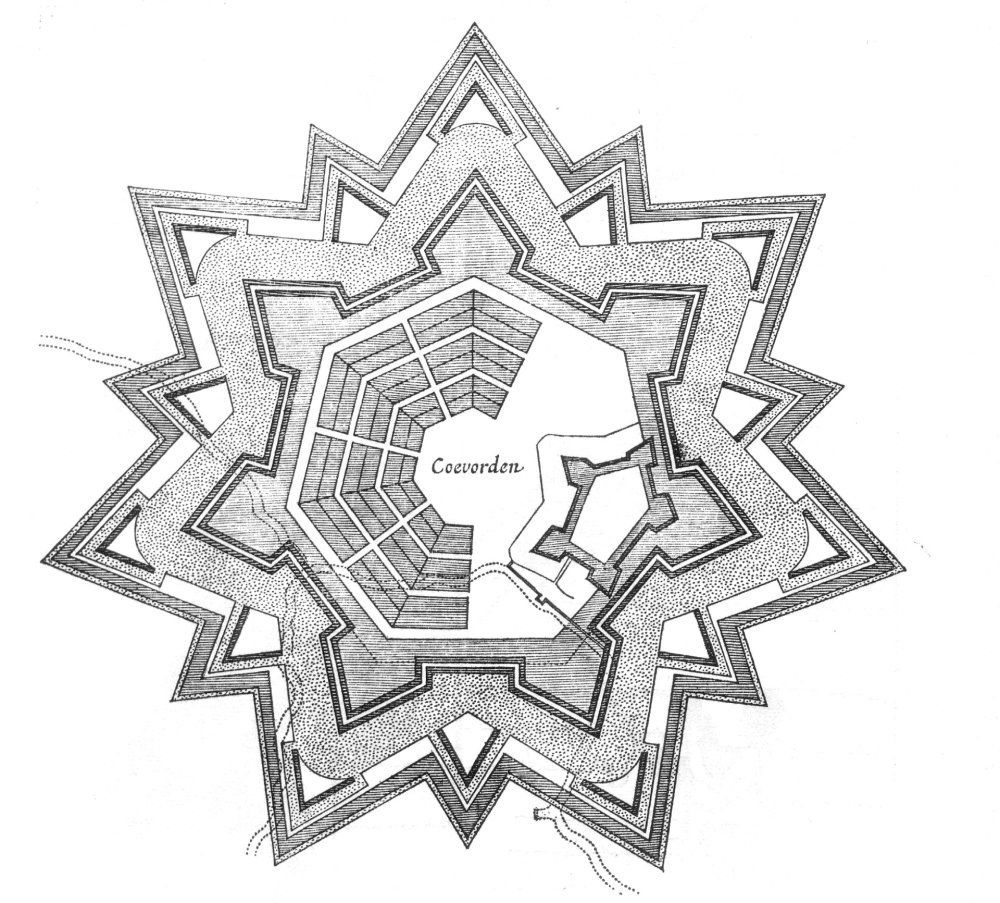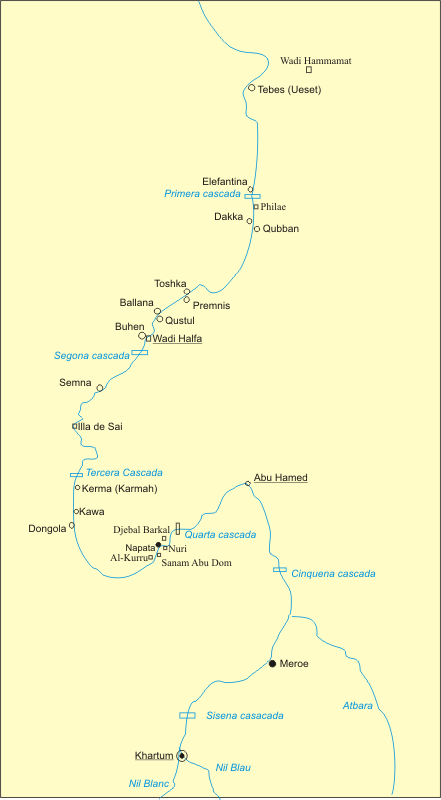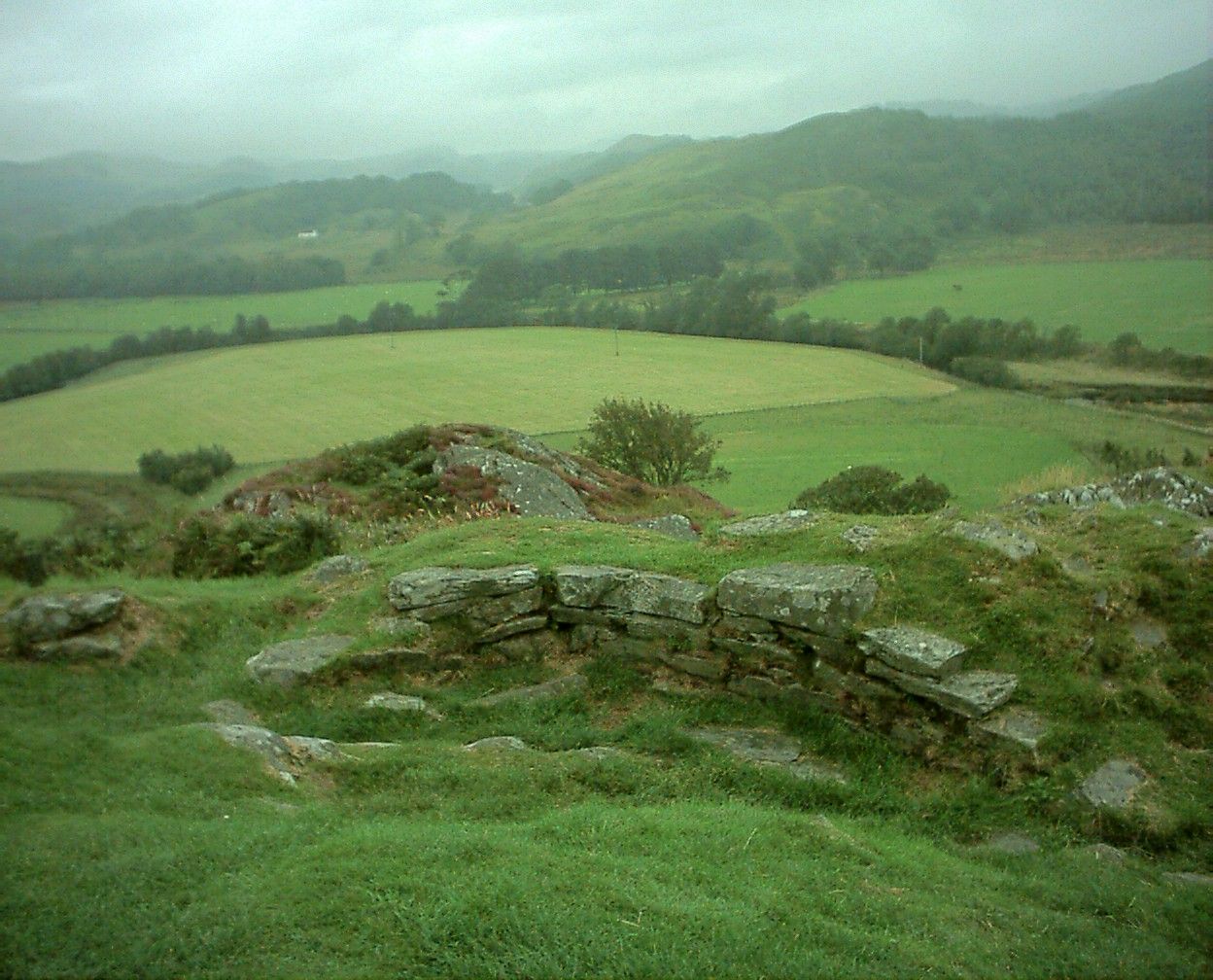|
Glacis
A glacis (, ) in military engineering is an artificial slope as part of a medieval castle or in early modern fortresses. They may be constructed of earth as a temporary structure or of stone in more permanent structure. More generally, a glacis is any slope, natural or artificial, which fulfils the above requirements. The etymology of this French word suggests a slope made dangerous with ice, hence the relationship with ''glacier''. A ''glacis plate'' is the sloped front-most section of the hull of a tank or other armoured fighting vehicle. Ancient fortifications A glacis could also appear in ancient fortresses, such as the one the ancient Egyptians built at Semna in Nubia. Here it was used by them to prevent enemy siege engines from weakening defensive walls. Hillforts in Britain started to incorporate glacis around 350 BC. Those at Maiden Castle, Dorset were high. Medieval fortifications Glacises, also called taluses, were incorporated into medieval fortifications ... [...More Info...] [...Related Items...] OR: [Wikipedia] [Google] [Baidu] |
Bastion Fort
A bastion fort or ''trace italienne'' (a phrase derived from non-standard French, meaning 'Italian outline') is a fortification in a style developed during the early modern period in response to the ascendancy of gunpowder weapons such as cannon, which rendered earlier medieval approaches to fortification obsolete. It appeared in the mid-fifteenth century in Italy. Some types, especially when combined with ravelins and other outworks, resembled the related star fort of the same era. The design of the fort is normally a polygon with bastions at the corners of the walls. These outcroppings eliminated protected blind spots, called "dead zones", and allowed fire along the curtain wall from positions protected from direct fire. Many bastion forts also feature cavaliers, which are raised secondary structures based entirely inside the primary structure. Origins Their predecessors, medieval fortresses, were usually placed on high hills. From there, arrows were shot at the ene ... [...More Info...] [...Related Items...] OR: [Wikipedia] [Google] [Baidu] |
Sloped Armour
Sloped armour is armour that is oriented neither Vertical and horizontal, vertically nor horizontally. Such angled armour is typically mounted on tanks and other armoured fighting vehicles (AFVs), as well as Naval ship, naval vessels such as battleships and cruisers. Sloping an armour plate makes it more difficult to penetrate by anti-tank weapons, such as Armour-piercing shell, armour-piercing shells, kinetic energy penetrators and Rocket (weapon), rockets, if they follow a more or less horizontal trajectory to their target, as is often the case. The improved protection is caused by three main effects. Firstly, a projectile hitting a plate at an angle other than 90° has to move through a greater thickness of armour, compared to hitting the same plate at a right-angle. In the latter case only the plate thickness (the surface normal, normal to the surface of the armour) must be pierced. Increasing the armour slope improves, for a given plate thickness, the level of protection at th ... [...More Info...] [...Related Items...] OR: [Wikipedia] [Google] [Baidu] |
Semna (Nubia)
The region of Semna is 15 miles south of Wadi Halfa and is situated where rocks cross the Nile narrowing its flow—the Semna Cataract. Semna was a fortified area established in the reign of Senusret I (1965–1920 BC) on the west bank of the Nile at the southern end of a series of Middle Kingdom fortresses founded during the Twelfth Dynasty of Egypt (1985–1795 BC) in the Second-Cataract area of Lower Nubia. There are three forts at Semna: Semna West (Semna Gharb), Semna East (Semna Sherq, also called Kummeh or Kumma), and Semna South (Semna Gubli). The forts to the east and west of the Semna Cataract are Semna East and West, respectively; Semna South is approximately one kilometer south of Semna West on the west bank of the Nile. The Semna gorge, at the southern edge of ancient Egypt, was the narrowest part of the Nile valley. It was here, at this strategic location, that the 12th Dynasty pharaohs built a cluster of four mud-brick fortresses: Semna, Kumma, Semna South an ... [...More Info...] [...Related Items...] OR: [Wikipedia] [Google] [Baidu] |
Siege
A siege () . is a military blockade of a city, or fortress, with the intent of conquering by attrition, or by well-prepared assault. Siege warfare (also called siegecrafts or poliorcetics) is a form of constant, low-intensity conflict characterized by one party holding a strong, static, defensive position. Consequently, an opportunity for negotiation between combatants is common, as proximity and fluctuating advantage can encourage diplomacy. A siege occurs when an attacker encounters a city or fortress that cannot be easily taken by a quick assault, and which refuses to surrender. Sieges involve surrounding the target to block provision of supplies and reinforcement or escape of troops (a tactic known as "investment"). This is typically coupled with attempts to reduce the fortifications by means of siege engines, artillery bombardment, mining (also known as sapping), or the use of deception or treachery to bypass defenses. Failing a military outcome, sieges can often be ... [...More Info...] [...Related Items...] OR: [Wikipedia] [Google] [Baidu] |
Hillforts In Britain
Hillforts in Britain refers to the various hillforts within the island of Great Britain. Although the earliest such constructs fitting this description come from the Neolithic British Isles, with a few also dating to later Bronze Age Britain, British hillforts were primarily constructed during the British Iron Age. Some of these were apparently abandoned in the southern areas that were a part of Roman Britain, although at the same time, those areas of northern Britain that remained free from Roman occupation saw an increase in their construction. Some hillforts were reused in the Early Middle Ages, and in some rarer cases, into the later medieval period as well. By the early modern period, these had essentially all been abandoned, with many being excavated by archaeology, archaeologists in the nineteenth century onward. There are around 3,300 structures that can be classed as hillforts or similar "defended enclosures" within Britain. Most of these are clustered in certain regions: s ... [...More Info...] [...Related Items...] OR: [Wikipedia] [Google] [Baidu] |
Defensive Wall
A defensive wall is a fortification usually used to protect a city, town or other settlement from potential aggressors. The walls can range from simple palisades or earthworks to extensive military fortifications such as curtain walls with towers, bastions and gates for access to the city. From ancient to modern times, they were used to enclose settlements. Generally, these are referred to as city walls or town walls, although there were also walls, such as the Great Wall of China, Walls of Benin, Hadrian's Wall, Anastasian Wall, and the Atlantic Wall, which extended far beyond the borders of a city and were used to enclose regions or mark territorial boundaries. In mountainous terrain, defensive walls such as '' letzis'' were used in combination with castles to seal valleys from potential attack. Beyond their defensive utility, many walls also had important symbolic functions representing the status and independence of the communities they embraced. Existing ancient walls ... [...More Info...] [...Related Items...] OR: [Wikipedia] [Google] [Baidu] |
Anti-tank Mine
An anti-tank or AT mine is a type of land mine designed to damage or destroy vehicles including tanks and armored fighting vehicles. Compared to anti-personnel mines, anti-tank mines typically have a much larger explosive charge, and a fuze designed to be triggered by vehicles or, in some cases, Remote control, remotely or by tampering with the mine. History First World War The first anti-tank mines were improvised during the First World War as a countermeasure against the first tanks introduced by the United Kingdom of Great Britain and Ireland, British towards the end of the war. Initially they were nothing more than a buried high-explosive shell (projectile), shell or Mortar (weapon), mortar bomb with its fuze upright. Later, purpose-built mines were developed, including the Flachmine 17, which was simply a wooden box packed with explosives and triggered either remotely or by a pressure fuze. By the end of the war, the Germans had developed row mining techniques, and mines ac ... [...More Info...] [...Related Items...] OR: [Wikipedia] [Google] [Baidu] |
Icon Tank Body
An icon () is a religious work of art, most commonly a painting, in the cultures of the Eastern Orthodox, Oriental Orthodox, Catholic, and Lutheran churches. The most common subjects include Jesus, Mary, saints, and angels. Although especially associated with portrait-style images concentrating on one or two main figures, the term also covers most of the religious images in a variety of artistic media produced by Eastern Christianity, including narrative scenes, usually from the Bible or the lives of saints. Icons are most commonly painted on wood panels with egg tempera, but they may also be cast in metal or carved in stone or embroidered on cloth or done in mosaic or fresco work or printed on paper or metal, etc. Comparable images from Western Christianity may be classified as "icons", although "iconic" may also be used to describe the static style of a devotional image. In the Greek language, the term for icon painting uses the same word as for "writing", and Orthodox source ... [...More Info...] [...Related Items...] OR: [Wikipedia] [Google] [Baidu] |
Gun Mantlet
A gun mantlet is an armour plate or shield attached to an armoured fighting vehicle's gun, protecting the opening through which the weapon's barrel projects from the hull or turret armour and, in many cases, ensuring the vulnerable warhead of a loaded shell does not protrude past the vehicle's armour. On many tanks during World War II, the gun mantlet covered both the main gun and any coaxial armament, and had the thickest armour on the vehicle. However, in many late Cold War and post-Cold War tank designs, the gun mantlet became one of the weaker parts of a vehicle's turret armour and thus a weakness. This was because as many mantlet designs were attached directly to the gun, it drastically increased the weight of the whole gun system and the amount of effort needed to elevate and depress it. This was an issue for gun stabilizers as they proved to be less efficient and accurate in keeping the gun steady with the added weight of the mantlet. Therefore, as seen in tanks such a ... [...More Info...] [...Related Items...] OR: [Wikipedia] [Google] [Baidu] |
Tilt-rod Fuze
Russian TM-57 mine with a tilt-rod fuze A tilt-rod fuze is a device used to trigger anti-vehicle landmines. Typically it consists of a vertical pole, normally around a meter high, which is connected to the top of a landmine. When the track or main body of a vehicle passes over the mine, the rod is tilted, releasing a spring-loaded striker which triggers a pyrotechnic delay of approximately half a second, followed by detonation of the main explosive charge. The small time delay allows the vehicle to continue over the mine before detonating, exposing more of it to the blast. A tilt-rod fuze has a number of advantages over pressure fuzesit acts across the entire width of a vehicle, rather than just its tracks or tires. This allows it to attack the vehicle's belly and potentially cause a catastrophic kill. Additionally, tilt rod fuze In military munitions, a fuze (sometimes fuse) is the part of the device that initiates its function. In some applications, such as torpedoes, a ... [...More Info...] [...Related Items...] OR: [Wikipedia] [Google] [Baidu] |








